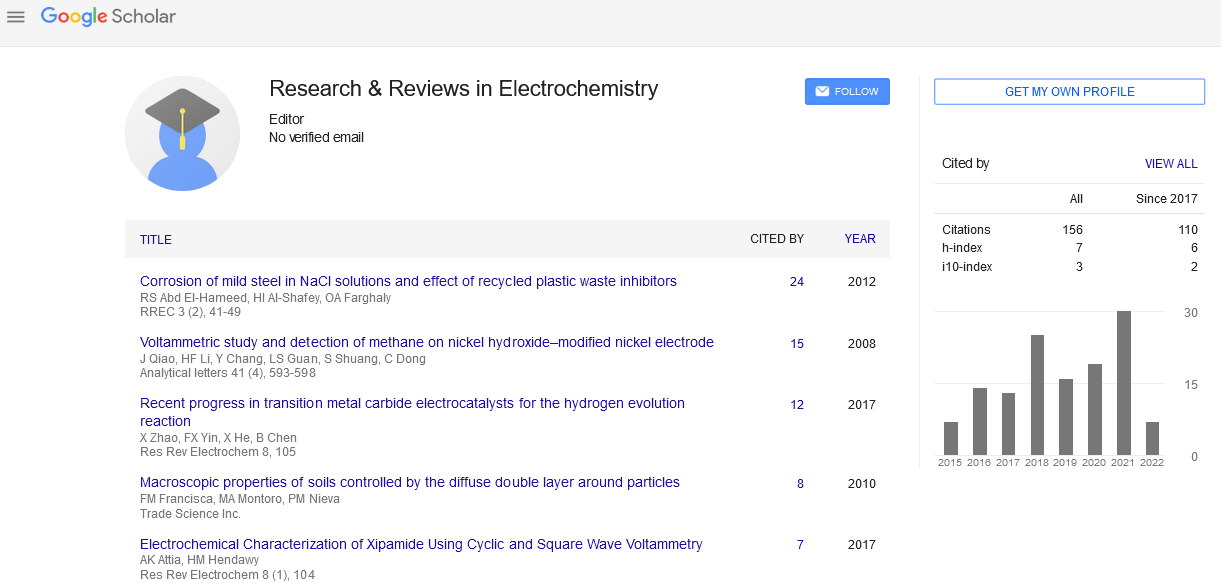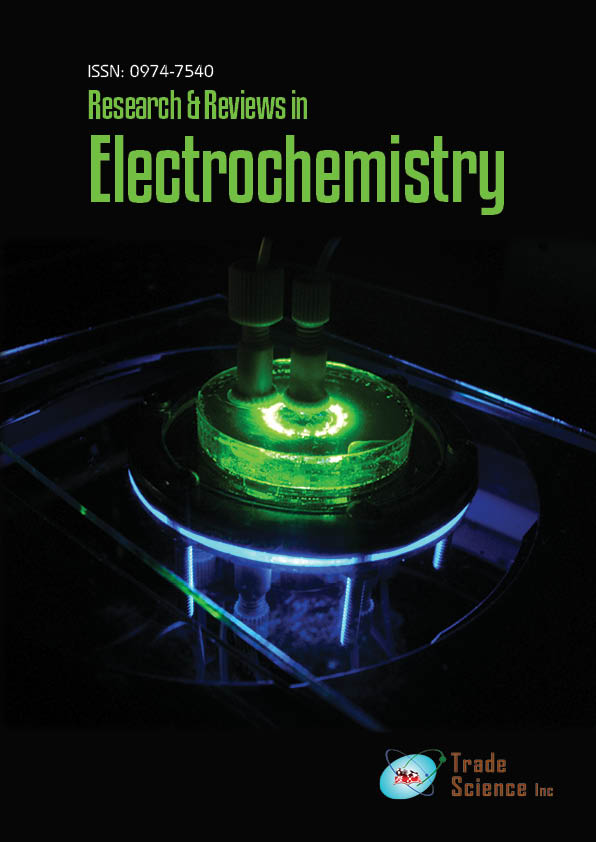Case Studies
, Volume: 11( 1)Electrochemical Treatment in Distillery
- *Correspondence:
- Abhinesh Chaudhari
Department of Chemistry, 57 Ullswater Avenue West End Southampton Hampshire UKS018 3QS
E-mail: publisher@tsijournals.com
Received: January 05, 2021; Accepted: January 20, 2021; Published: January 30, 2021
Abstract
Electrochemical treatment techniques can provide a significant contribution to environmental protection by reducing waste and hazardous elements in effluents. Decolorizing the distillery effluent completely is a demanding process. The dark colour of the industry-treated effluent remains. Using an electrochemical approach, this research reports full colour removal of industry treated distillery effluent. With a considerable quantity of annual effluent generation, the distillery business is known as one of India's most polluting industries. The optimization of electrochemical therapy in today's reality. Tp deal with the chemical oxygen needs of cod. pH, current density, electrolysis time, and electrolyte dose were chosen as operating factors and chemical oxygen demand, respectivelyKeywords
Distillery effluent; Electrochemical treatment; Spectroscopy
Introduction
Distilleries are an important economic sector in India, where ethyl alcohol is created by a fermentation process from cane sugar molasses. Distillation is used to separate alcohol, which is a dark brown liquid with an odour and includes a lot of organic stuff. Distillery wasted wash is treated using a variety of ways before being disposed of on land or in the water. They have a number of drawbacks, including limited removal effectiveness and high cost. Electrooxidation approaches were extensively researched in this electrochemical treatment process. Electrooxidation is a method of destroying or converting pollutants into simpler forms such as carbon dioxide and water. Electrochemical treatment techniques can provide a significant contribution to environmental protection by reducing waste and hazardous elements in effluents. Decolorizing the distillery effluent completely is a demanding process. The dark colour of the industry-treated effluent remains. A static electrochemical reactor was used to electrolyze distillery wastewater. The distillery effluent was treated using two types of anodes: planar Graphite (Gr) and Titanium Substrate Insoluble Anodes (TSIA). TSIA electrodes were made of lead dioxide on titanium (PbO2-Ti) and ruthenium oxide on titanium (RuO2-Ti). Density at the moment (C.D.) In a 1.5 dm3 electrolytic batch reactor, rice grain-based distillery wastewater was electrochemically treated using aluminium plate electrodes. A current density (j) of 89.3 A/m2 and pH 8 were determined to be ideal for the four-plate setups, yielding maximal Chemical Oxygen Demand (COD) and colour removal of 93 percent and 87 percent, respectively. The initial pH had a significant impact on the chemical dissolution of aluminium (pHi). Anode consumption reduced while energy consumption increased at higher pHi (pH 9.5). The aluminium electrode used 16.855 g/dm3 wastewater and 31.4 Wh/dm3 energy at the ideal current density of 89.3 A/m2 , reaching a maximum COD removal of 87 percent. At various pH levels, the settling and filterability characteristics of electrochemically treated sludge were investigated. The best settling feature was seen in treated slurry with a pH of 9.5, which deteriorated as the pH increased. The best filterability was achieved with EC-treated effluent at pHi 8.
Before being treated, distillery waste wash was collected from the industry and kept chilled until it was needed. The tests were carried out carried out. At an applied anodic current density, the experiments were run for 16 hours. The studies were carried out in the potential region of water oxidation due to the high applied anodic current density. To perform analytical measurements and monitor the trials, samples were taken every 2 hours in all of the tests. Without interrupting the experiment, the samples were collected, and the volume obtained was calculated.

